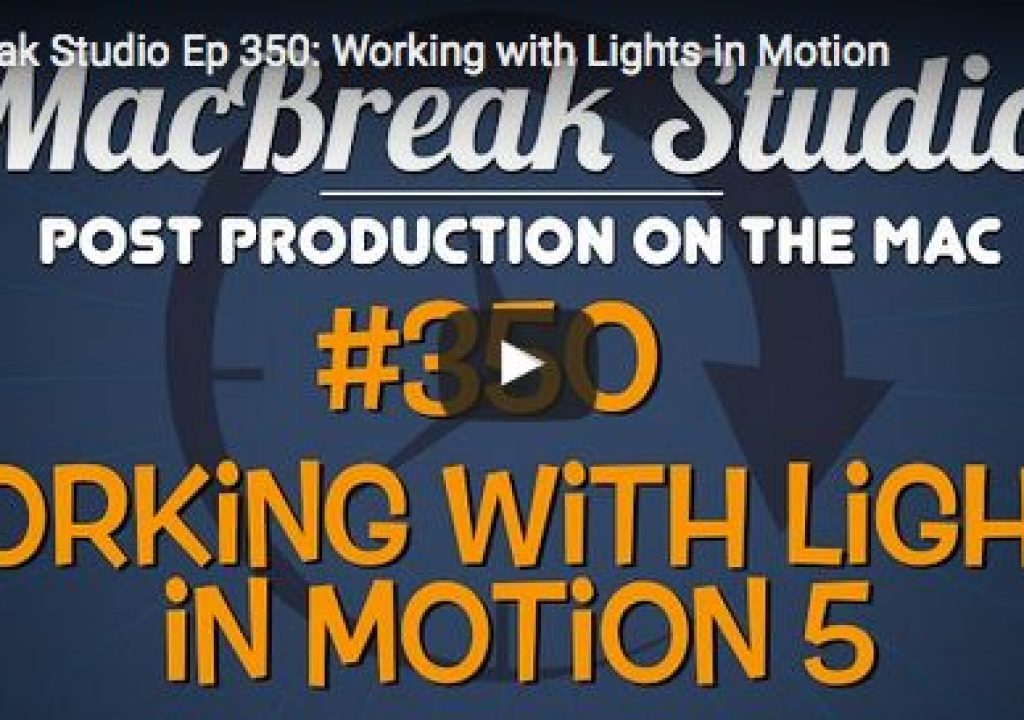This week on MacBreak Studio, I give Steve Martin from Ripple Training a little tour of the different light types in Motion.
When working in 3D space in Motion, you have the option of adding lights to your scene. By default, the scene is “lit” just like a 2D scene: there is even, ambient lighting in all directions (with no shadows). As soon as you add a light, this default lighting disappears and all the light in the scene now comes from the one light source. These light objects has 4 different “Types” that can be selected, and they are the topic of this week’s episode.
These light types – Point, Directional, Spot, and Ambient – mirror the light types employed in full 3D applications such as Maxon’s Cinema4D, so if you have experience with these programs, you’ll feel right at home in Motion.
Each light type is modeled after light sources in the real world. A Point light is analogous to a light bulb: the light emanates from a single x,y,z position in 3D space and spreads out from that point in all directions. Motion defaults to this light type and it’s probably the easiest one to understand and manipulate. To really see lights in action, you’ll want to enable the Shadows checkbox in the HUD or in the Inspector, since each of these light types cast shadows in very different ways. Since a Point light spreads light in all directions, its rotation x,y,z values have no impact on the scene; only position matters.
A Directional light is in some ways the opposite of a point light: all of its light rays point in the same parallel direction, similar to how the sun hits the earth (technically the sun is more of a point light but because of its distance it acts like a directional light). With a Directional light, its position has no impact on your scene but rather only rotation matters.
A Spotlight is like a shaded point light: you can point it in a direction and control how wide the light is thrown, very much like a real spotlight on a stage. Both position and rotation impact this light type. It is the most flexible and powerful light type.
Finally, the Ambient light type adds back that ambient light we started with to create overall lighting in a scene.
All these light types have many other parameters that can be changed and animated such as intensity and color. Lights in Motion are a powerful part of the 3D toolset. If you want to learn more about 3D in Motion, check out our Using the 3D Camera in Motion 5 tutorial.

Filmtools
Filmmakers go-to destination for pre-production, production & post production equipment!
Shop Now













